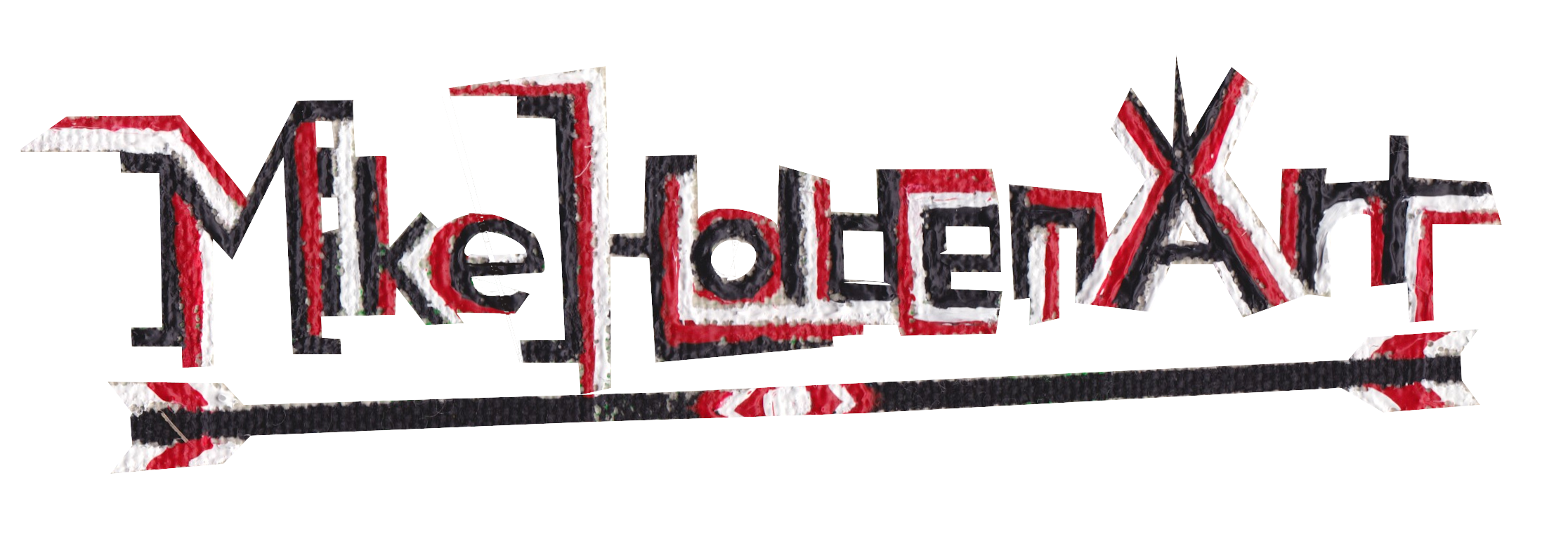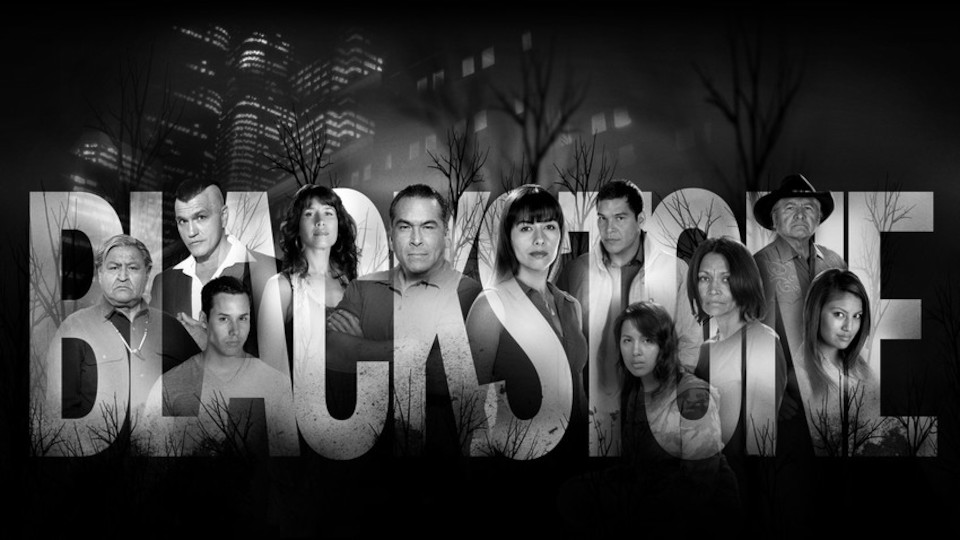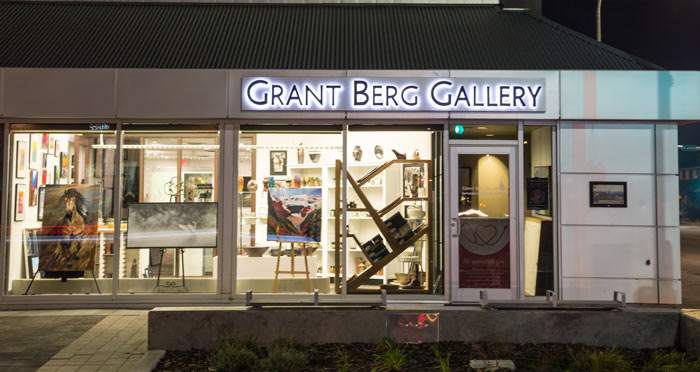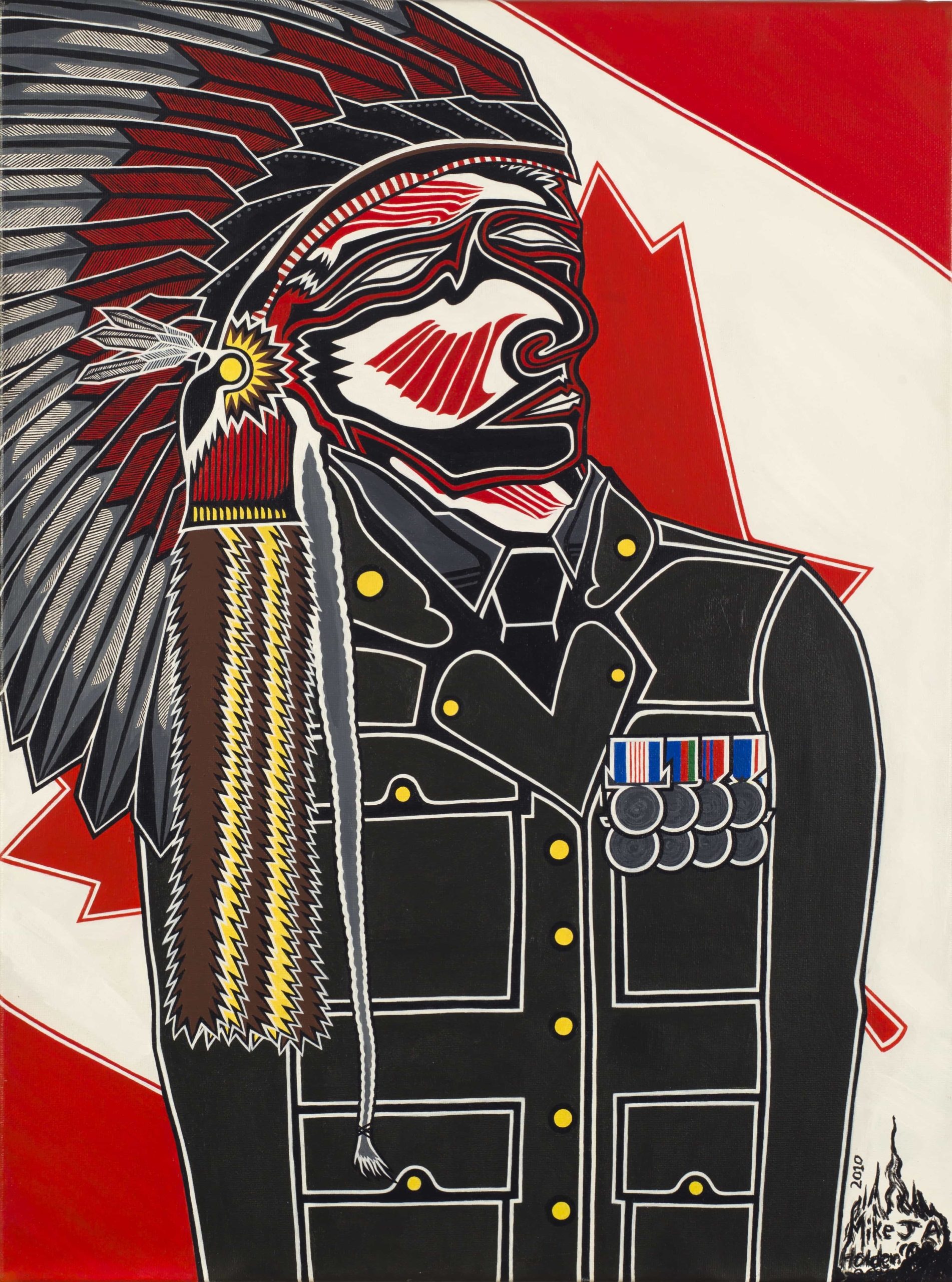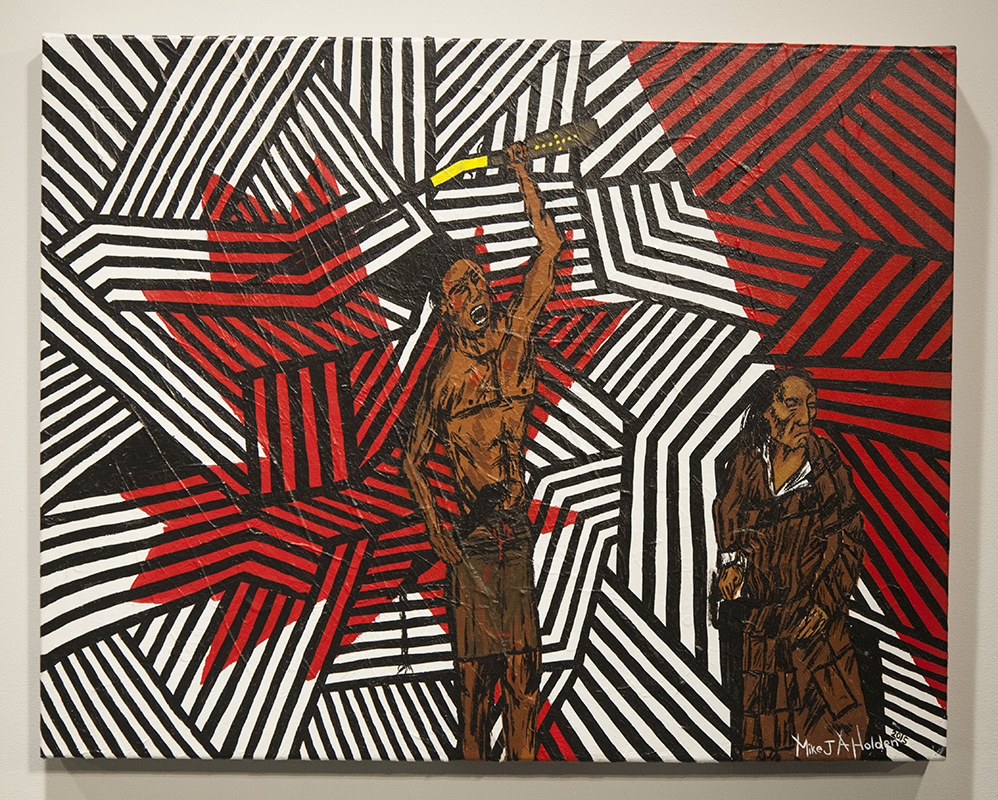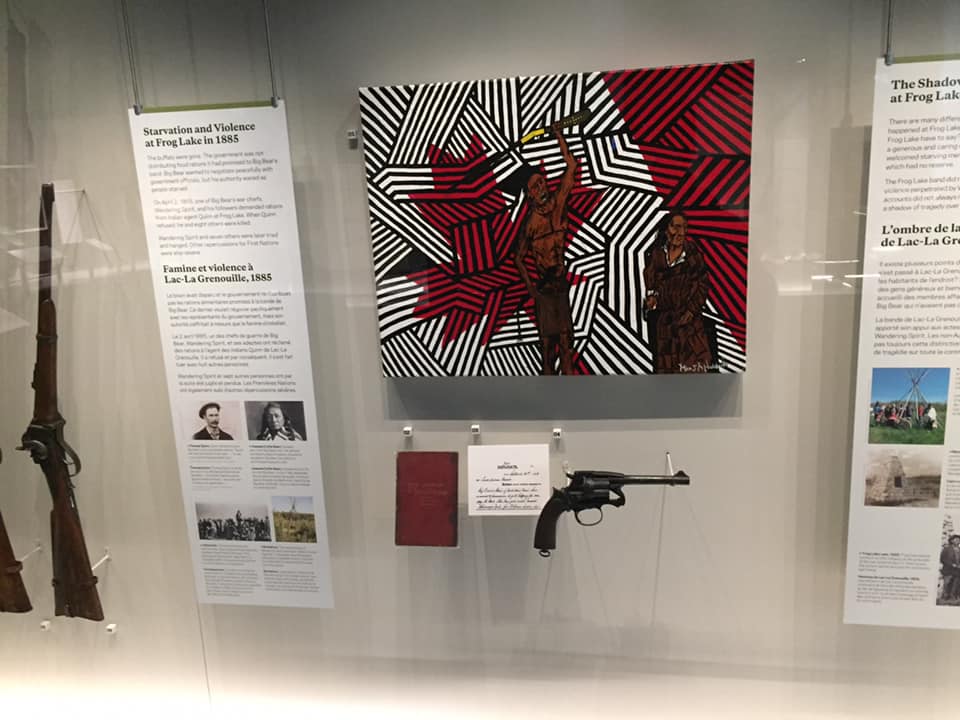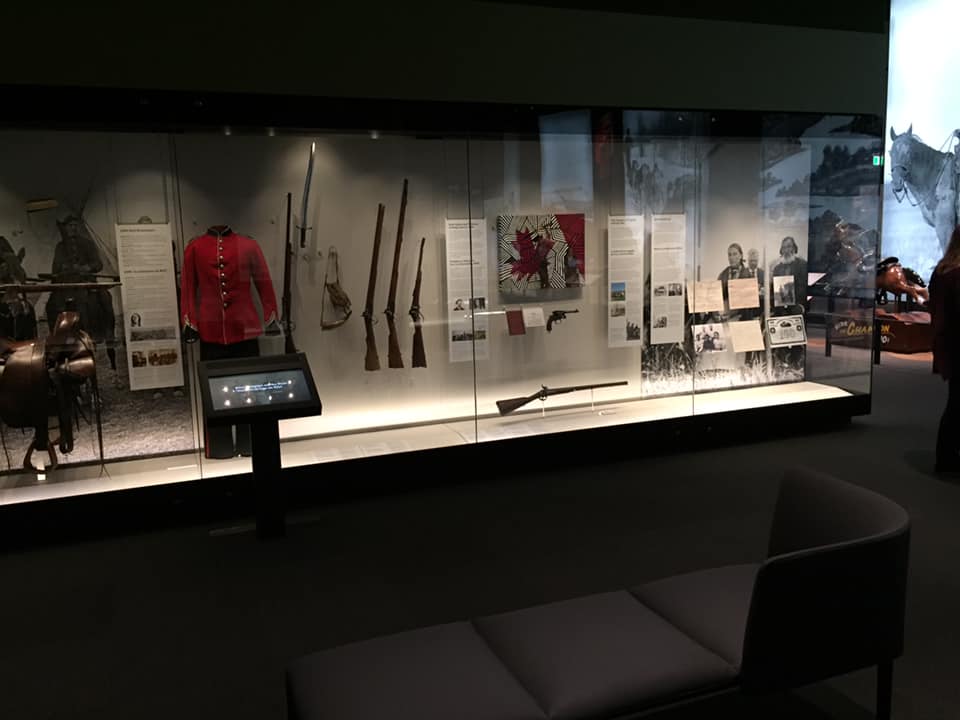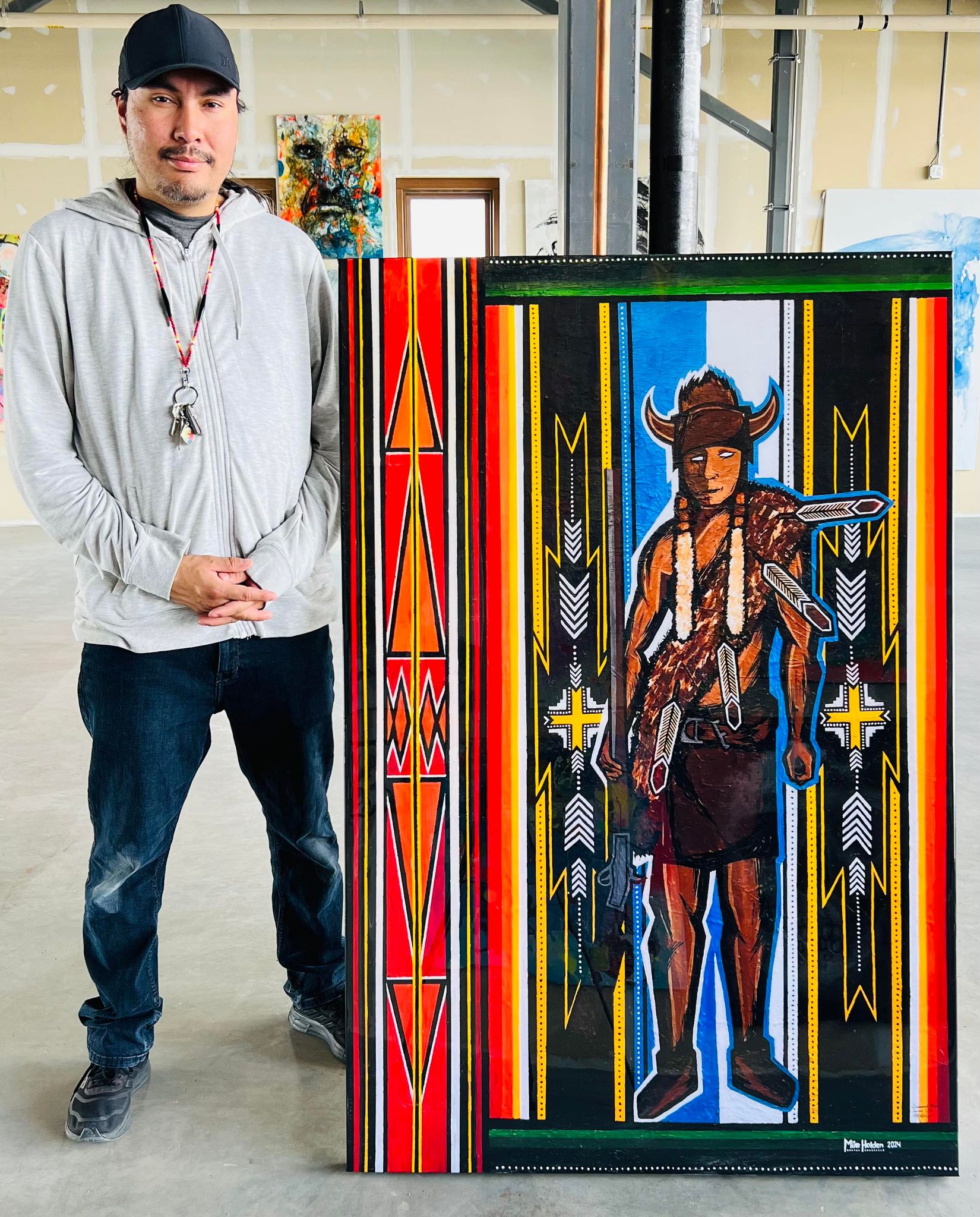Mike Holden Biography
Mike Holden is a Saulteaux Cree Visual Artist and Actor, known for his role as Momo on the acclaimed First Nations drama Blackstone.
Holden’s acrylic paintings Fine-Day, Wandering Spirit, and Thunderbird Warrior are part of the Royal Alberta Museum’s permanent collection in Edmonton, Alberta, while his painting Dreaver is held in the permanent collection of the Canadian War Museum in Ottawa, Ontario. Most recently, Holden’s works Fine-Day Part III, Every Child Matters, They Tried to Bury Us (They Didn’t Know We Were Seeds), and The War of 1812 were acquired by The Canadian Museum of History in Gatineau, Quebec.
His contributions to the art world have also included nearly a dozen Fine Art Exhibits and appearances at two prestigious live auction fundraisers. Recognized for his artistic depth and cultural significance, Holden is represented in the permanent collections of three Alberta galleries: The Art Sales and Rental Gallery at The Art Gallery of Alberta in Edmonton, the Grant Berg Gallery in Grande Prairie, and CAVA – Centre d’arts visuels de l’Alberta in Edmonton.
Deeply connected to his Indigenous heritage, Holden’s work is rooted in Cree, Saulteaux, and Blackfoot spiritual teachings and stories. Being half Cree and half Saulteaux, and having grown up immersed in Blackfoot teachings and ceremonies, his art reflects the knowledge and traditions of these three Prairie Nations he originates from.
Holden paints in a modern contemporary style. His work embodies the enduring strength, resilience, and wisdom found within Indigenous traditions and teachings. Through each painting, he preserves traditional stories, honours ancestral knowledge, and offers a timeless connection to the natural world.
Through his art, Holden strives to inspire the next generation with the beauty and power of spiritual ceremonies and ways of life, ensuring these teachings continue to be passed on for generations to come.
Mike Holden in character as he played the recurring role of “Momo” on the T.V. Series BLACKSTONE, Season one.
VISUAL ARTIST CAREER
Mike Holden is represented by Grant Berg Gallery and The Art Sales and Rental Gallery at The Art Gallery of Alberta.
Grant Berg Gallery, Grande Prairie, AB
The Art Gallery of Alberta, AB
The Art Sales & Rental Gallery, The Art Gallery of Alberta, AB
Visit Mike Holden’s official artist profile and view featured works at the Art Gallery of Alberta.
https://www.youraga.ca/art-sales-rentals/project/maskwa-woman
Mike Holden’s work acquired by The Canadian War Musuem
Mike Holden’s Original Acrylic on Canvas Painting, Dreaver, Has been permanently acquired by The Canadian War Museum located in Ottawa, Ontario.
Dreaver by: Mike Holden
Acrylic on Canvas, 18″ x 24″
Description:
Chief Joseph Dreaver (1892-1978) was a decorated veteran of both WWI and WWII. While serving as a sapper in the 1st World War he was awarded the Military Medal for bravery at Ypres.
He reenlisted at the age of 48 when WWII broke out. Because of his age he remained in AB serving as a guard of POWs.
Dreaver’s accommodations included: 2 Coronation Medals, a Confederation of Canada Medal, a Second World War Medal, a Voluntary Service Medal, the Military Medal, and the Great War for Civilization Medal. He served for more than 40 years as Chief of the Mistawasis Cree Band and was a lifetime member of the Federation of Saskatchewan Indians.

The Canadian War Museum, Ottawa, ON
Mike Holden’s work acquired by The Royal Alberta Museum
Mike Holden’s Original Acrylic on Canvas Paintings, Fine-Day, Wandering Spirit and Thunderbird Warrior, have been permanently acquired by The Royal Alberta Museum located in Edmonton, Alberta.
Fine-Day by: Mike Holden
Acrylic on Canvas, 20″ x 30″
Wandering Spirit by: Mike Holden
Acrylic on Canvas, 22″ x 28″
Thunderbird Warrior by Mike Holden
Acrylic on Canvas, 18″ x 24″
Fine-Day Part lll
Fine-Day, a respected Plains Cree warrior, led his people in the Battle of Cut Knife fought on May 2, 1885. With only about 60 Cree and Assiniboine warriors, they faced a Canadian force of 350 soldiers, armed with cannons and a Gatling gun. Fine-Day skillfully used the terrain, scattering his warriors in small groups to create the illusion of a much larger force. This clever tactic led to the eventual retreat of the Canadian troops.
The two yellow stars beside Fine-Day symbolize the belief many Indigenous Nations have that human beings come from the stars, reflecting a deep spiritual connection between the Earth, The Sun and the universe. The four triangles on the left further symbolize that belief.
Later in life Fine-Day became a very wise elder, a medicine man and a very powerful spiritual leader for his people.
Click here to add your own text
